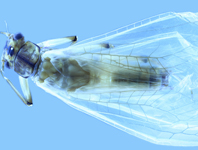Abstract
We describe five new species of Pycnomerus (P. mahanatoa, P. rairua, P. raivavae, P. taralewisae, and P. vavitu spp. nov.) from subfossil material collected on the island of Raivavae in the Austral Archipelago of French Polynesia. Like the two species of Pycnomerus recently described from Rimatara (Porch & Smith 2017), we consider it is probable that some or even most of the endemic Raivavae species are globally extinct. This is because the species have, so far, only been found in as subfossil specimens in sediments that date to the period immediately before or just after human arrival on the island (c.1300 AD), they have not been collected historically, and very little indigenous forest of Raivavae remains. These species add to the growing body of knowledge regarding the zopherid fauna of eastern Polynesia, which is, and unfortunately will always likely be, based primarily on the subfossil record from the region.
References
Craig, D.A. & Porch, N. (2013) Subfossils of extinct and extant species of Simuliidae (Diptera) from Austral and Cook Islands (Polynesia): anthropogenic extirpation of an aquatic insect? Zootaxa, 3641 (4), 448–462.
https://doi.org/10.11646/zootaxa.3641.4.10
Englund, R.A. (2003) Report for the 2002 Pacific Biological Survey, Bishop Museum Austral Islands, French Polynesia expedition to Raivavae and Rapa Iti. Pacific Biological Survey, Contribution No. 2003-004, i–v + 1–30.
Gargominy, O. & Fontaine, B. (2014) A global overview of the terrestrial and freshwater molluscs. In: Meyer, J.-Y. & Claridge, E.M. (Eds.), Terrestrial Biodiversity of the Austral Islands, French Polynesia. Patrimoines naturels. 72. Muséum national d’Histoire naturelle, Paris, pp. 55–92.
Gillespie, R.G., Brewer, M.S. & Roderick, G.K. (2017) Ancient biogeography of generalist predators on remote oceanic islands. Journal of Biogeography, 44, 1098–1109.
https://doi.org/10.1111/jbi.12967
Kahn, J.G., Nickelsen, C., Stevenson, J., Porch, N., Dotte-Sarout, E., Christensen, C.C., May, L., Athens, J.S. & Kirch, P.V. (2015) Mid- to late Holocene landscape change and anthropogenic transformations on Mo’orea, Society Islands: A multi-proxy approach. The Holocene, 25 (2), 333–347.
https://doi.org/10.1177/0959683614558649
Liebherr, J.K. & Porch, N. (2015) Reassembling a lost lowland carabid beetle assemblage (Coleoptera) from Kauai, Hawaiian Islands. Invertebrate Systematics, 29 (2), 191–213.
https://doi.org/10.1071/is14047
Lord, N.P. & Leschen, R.A.B. (2014) Illustrated catalogue and type designations of the New Zealand Zopheridae (Coleoptera: Tenebrionoidea). Zootaxa, 3809 (1), 1–127.
https://doi.org/10.11646/zootaxa.3809.1.1
Meyer, J.-Y. (2014) The Austral Islands in French Polynesia. In: Terrestrial Biodiversity of the Austral Islands, French Polynesia. In: Meyer, J.-Y. & Claridge, E.M. (Eds.), Patrimoines naturels. 72. Muséum national d’Histoire naturelle, Paris, pp. 13–17.
Porch, N. & Elias, S.A. (2000) Quaternary beetles: a review and issues for Australian studies. Australian Journal of Entomology, 39 (1), 1–9.
https://doi.org/10.1046/j.1440-6055.2000.00143.x
Porch, N. & Smith, T.R. (2017) New Pycnomerus Erichson (Coleoptera: Zopheridae: Pycnomerini) from Rimatara, French Polynesia. Zootaxa, 4237 (1), 154–166.
https://doi.org/10.11646/zootaxa.4237.1.8
Prebble, M., Anderson, A. & Kennett, D.J. (2013) Forest clearance and agricultural expansion on Rapa, Austral Archipelago, French Polynesia. The Holocene, 23 (2), 179–196.
https://doi.org/10.1177/0959683612455551
Prebble, M. & Wilmshurst, J.M. (2009) Detecting the initial impact of humans and introduced species on island environments in Remote Oceania using palaeoecology. Biological Invasions, 11, 1529–1556.
https://doi.org/10.1007/s10530-008-9405-0
Prebble, M., Anderson, A., Augustinus, P., Emmitt, J., Fallon, S., Furey, L., Holdaway, S.J., Jorgensen, A., Ladefoged, T.N., Matthews, P.J., Meyer, J.-Y., Phillipps, R., Wallace, R. & Porch N. (2019) Early tropical crop production in marginal subtropical and temperate Polynesia. Proceedings of the National Academy of Sciences USA, 116 (18), 8824–8833.
https://doi.org/10.1073/pnas.1821732116
Ramage, T. (2017) Checklist of the terrestrial and freshwater arthropods of French Polynesia (Chelicerata; Myriapoda; Crustacea; Hexapoda). Zoosystema, 39 (2), 213–225.
https://doi.org/10.5252/z2017n2a3
Seibold, S., Brandl, R., Buse, J., Hothorn, T., Schmidl, J., Thorn, S. & Müller, J. (2015) Association of extinction risk of saproxylic beetles with ecological degradation of forests in Europe. Conservation Biology, 29 (2), 382–390.
https://doi.org/10.1111/cobi.12427
Shaw, K.L. & Gillespie, R.G. (2016) Comparative phylogeography of oceanic archipelagos: Hotspots for inferences of evolutionary process. Proceedings of the National Academy of Sciences USA, 113 (29), 7986–7993.
https://doi.org/10.1073/pnas.1601078113
Whitehouse, N.J. (2006) The Holocene British and Irish ancient forest fossil beetle fauna: implications for forest history, biodiversity and faunal colonisation. Quaternary Science Reviews, 25 (15–16), 1755–1789.

